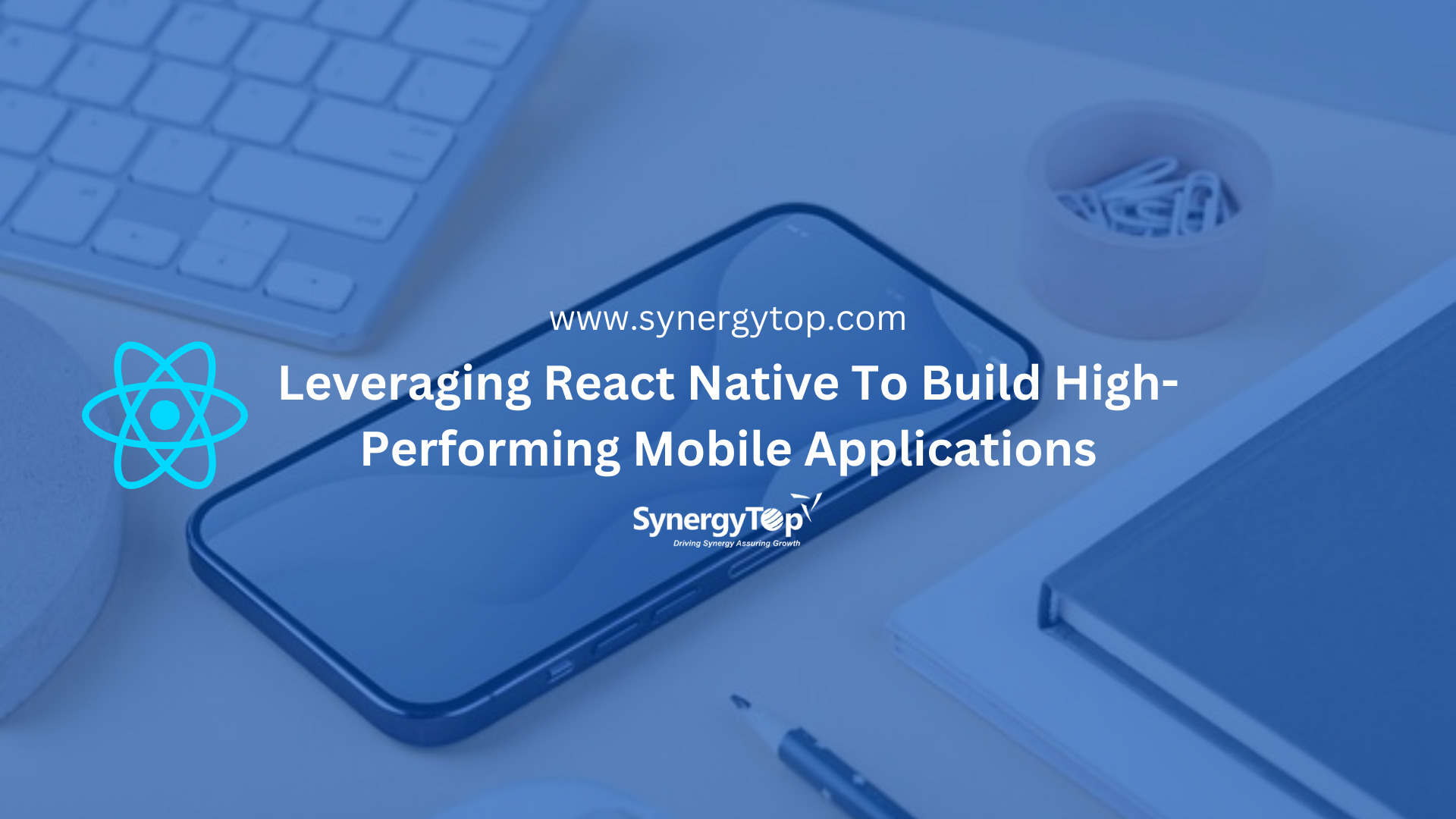Businesses across the globe are building mobile applications – either as their main product offering or to complement their key product line. For that, developers are opting for cross-platform technologies like React Native rather than spending time and resources on building different applications for iOS and Android.
Cross-platform technologies enable developers to write code once and use the same code to develop powerful Android and iOS applications. In this blog, I will focus on React Native – a platform that we, at SynergyTop highly recommend and use.

React Native is the preferred choice for many popular and widely used mobile applications including Facebook, Instagram, Bloomberg, Walmart, Airbnb and more. It enables developers to build robust and high-performing mobile applications using JavaScript.
What is React Native?
It is an open-source JavaScript framework that supports two major Mobile ecosystems – iOS and Android. It can be used to develop natively rendering mobile applications and build user interfaces for mobile platforms.
React Native is the mobile version of React, the JavaScript library from Facebook which is immensely popular with web developers across the globe. While React focuses on browsers, React Native concentrates on mobile platforms. Similar to React, the React Native apps are developed using JSX; which is a mix of JavaScript and XML. React Native delivers the APIs in Objective-C for iOS and Java for Android. This ensures that the application is being rendered natively; using the mobile UI components and not web views.
React Native can be used by web developers proficient in React to develop native applications with shared code for the iOS and Android platforms. This saves development time and associated costs and assures that the mobile application goes to the market faster.
High Performance – Guaranteed
Mobile Applications developed using React Native comes equipped with Native modules and components that guarantee enhanced performance. While the other cross-platform technologies, such as PhoneGap render the APIs as web view, React delivers the code as Objective C in iOS and AS Java in Android.
Furthermore, the framework’s component-based structure ensures that the applications are agile, highly responsive, and robust. Applications built using this framework consume less memory and load quickly.
React Native, equipped with the React Library ensures that the application comes along with stunning UI – armed with the speed of JavaScript, dynamic rendering, and increased responsiveness. This positive effect of React Native on the application’s UI, in turn, corroborates that the UX is superior vis-à-vis any other applications developed using myriad cross-platform technologies.
A Few More Advantages – React Native
- Cost-Effective – React Native developers write code in JSX and the code can be used to develop web, iOS, and Android applications. The organization is thereby saving costs by engaging only one developer for building the web and mobile applications on iOS and Android, both.
- Shorter Learning Curve – Developers with proficiency in JavaScript can quickly learn the nuances of React Native development.
- Easy Integration with 3rd Party Applications – React Native allows developers to assimilate 3rd party native libraries and plugins to your mobile applications. This may include systems like Payment, Location, Data Encryption, and so on.
- A Robust Ecosystem – React Native is backed by Facebook and has an ecosystem of several thousand developers. It is increasingly becoming the most preferred cross-platform development platform.
About SynergyTop
SynergyTop has proficiency in developing high-performance web and mobile solutions using React and React Native. Write to us at contact@synergytop.com for further information or explore our mobile app development capabilities.
















